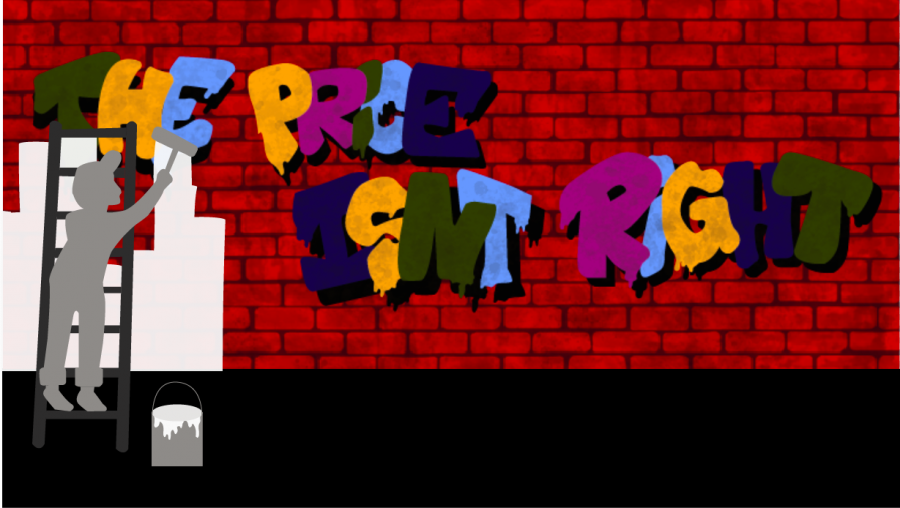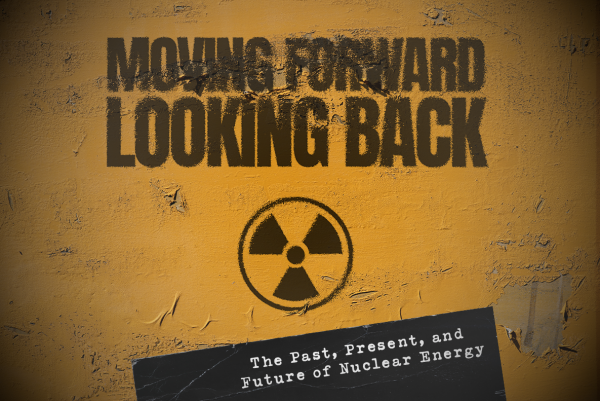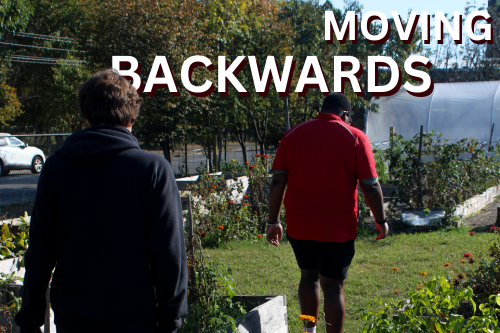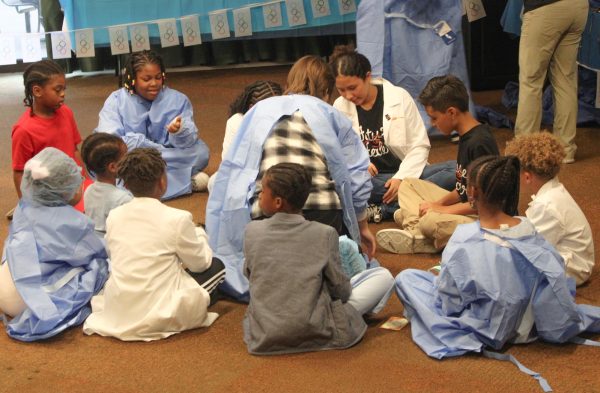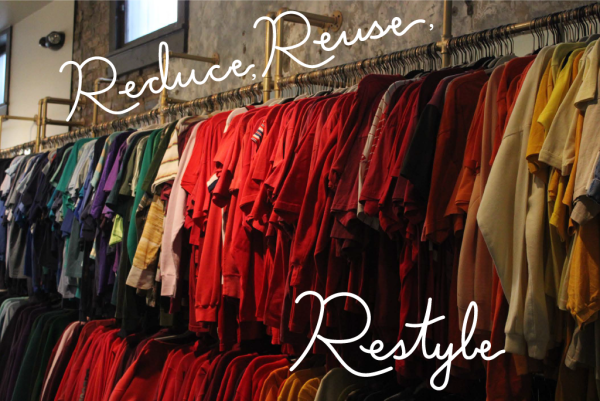The Price Isn’t Right
My first trip to NuLu — the name given to the trendy, affluent neighborhood that sits just outside Louisville’s downtown — was a bit of an eye opening experience. Whereas I was expecting to spend the day enjoying the stores and restaurants that I had heard about so often, I was instead met with what would become my first glimpse into an issue that is seldom discussed.
I watched as a man walked up and down East Market Street, his arms protected slightly by his thin sleeves from the cold November weather. His jeans had large holes in them right below the knee and his faded brown dress shoes creased as he shuffled along the sidewalk. He glanced at strangers with a tired look in his eyes, nodding his head, and seemingly building up the courage to ask them for something. Up and down he went, past a booth selling flowers for $8.00 a stem, past the gourmet brunch spot with a line forming out onto the street, past the art boutique offering pieces with price tags higher than the rent for the homes that once sat in this same area.
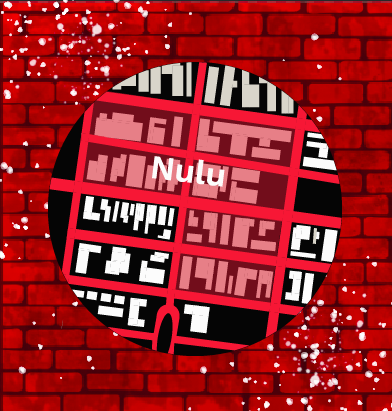
This pattern continued — the shuffling, the glancing, the nods — until he finally approached a young couple heading off to their car.
“Do you have a few dollars?” he asked.
They shook their heads, flashed a quick look of sympathy, and carried on.
He proceeded to prompt a few more strangers with the same question, but to no avail.
Some shook their heads like the young couple, while others simply ignored him.
The man stuck out like a sore thumb. His presence seemed to be a sort of reminder of the past connected to this area and the bigger issue unfolding in other neighborhoods around the city.
A Look at Clarksdale
Like many others in Louisville, I was already aware of gentrification and its association with Nulu, especially as it has become one of the focuses of the local Black Lives Matter movement in the past several months. However, what is less talked about is the former Clarksdale community that once sat adjacent to this same land.
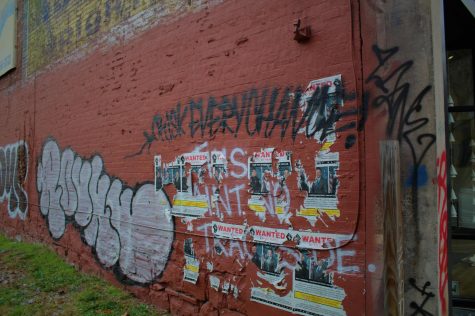
Clarksdale was a public housing project constructed in 1938 meant to provide homes for World War II veterans and their families once they returned from combat. At the time, the housing was segregated, permitting only white residents to live there.
“There were two major slum clearance projects in this first wave of the New Deal in the late thirties. One was Clarksdale. The other was for Black people west of downtown — another slum clearance project called Beecher Terrace,” said Tom Owen, local historian and former councilman for district eight.
Over the years, the population of the Clarksdale housing began to shift. After several decades, the departure of white people by way of white flight — when white residents living in urban areas departed their neighborhoods in favor of the suburbs — began to occur. Before long, the demographic had become overwhelmingly African-American. Along with this, years of disinvestment had caused the housing to deteriorate.
During the late 1990s, the state of the Clarksdale housing caught the attention of the government. Officials decided to address these problems with the help of Hope V1, a federal grant provided by the Department of Housing and Urban Development focused on the redevelopment of dilapidated projects. The grant had already been used once before to revitalize another set of projects named Cotter and Lang homes that were located in the West End. What exactly did the grant do?
“It was a federal program to turn those projects into mixed use/mixed income housing and some of the units would be subsidized — as in rent subsidies — and some of them would be condos that you could buy back,” said Owen.
Local institutions, such as the Louisville Metro Housing Authority, viewed Hope V1 as the key that would fix Clarksdale of all its problems. From their perspective, the housing was a highly dense place that bred antisocial behavior, dysfunctional families, and rampant amounts of crime. But to some from the area, Clarksdale was something far different — a vibrant community.
“There were lots of people taking care of each other,” said Cindy Weber, Reverend at Jefferson Street Baptist Community at Liberty. “There were some real problems, but the people wanted to live in this community and they were moved out.”
Weber’s been with the church for 35 years now. The church’s building originally sat on Jefferson Street, just a couple blocks away from the Clarksdale site. When she became Reverend, the church was kicked out of its building in objection to them having a female pastor. They made the decision to move right across the street to Liberty, as it was important to them to maintain their connection with Clarksdale.
When the church became aware of the city’s application for the Hope V1 grant, they, along with a group made up of other congregations in the city called the Citizens of Louisville Organized and United Together (CLOUT), went door to door to talk to residents. They also held meetings in their church building with the neighbors to hear their concerns about the proposed project. Weber expected the residents to demand that the redevelopment be fought tooth and nail, but the residents had a different idea.
“What they said was that they wanted the Hope V1 to happen, but they wanted to be able to stay in the new apartments in the neighborhood. And so we began to fight for that,” Weber said.
Together, they formed a new organization, the Concerned Citizens of Clarksdale United (CCCU), that would be dedicated to this cause. The group made an agreement with the local government that would initiate the revitalization without risking a situation similar to the displacement of the people who lived in Park Duvalle, a neighborhood southwest of downtown Louisville that was the result of a Hope VI transformation that redeveloped the Cotter/Lang housing projects. Instead of tearing down all of the housing at once, the plan was to redevelop one block at a time to minimize relocation.
Unfortunately, local leaders did not follow through with this agreement. And just days before Christmas, the Louisville Metro Housing Authority (LMHA) began to move residents out. Relocation payments were provided to those who decided to move themselves — the money was an attractive offering considering the upcoming holiday.
The city did rehouse residents in other low-income areas; however, a majority of them were just put into other housing projects. One of the housing projects was Sheppard Square in Smoketown, which was eventually redeveloped by Hope V1, like Clarksdale. Another was Beecher Terrace, recently torn down as part of the revitalization of the Russell neighborhood.
“Folks have just been totally screwed over, totally moved from one place to the other,” Weber said.
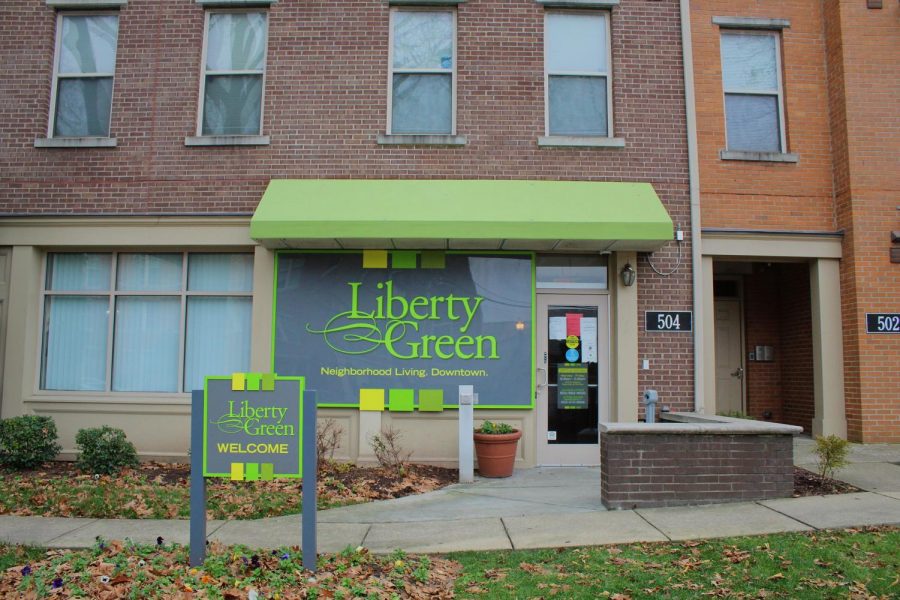
As a result of the development, a new apartment complex named Liberty Green rose from the ashes of Clarksdale. Although former residents of the neighborhood were given the opportunity to live in the new homes, there were several barriers that kept this from happening. In Liberty Green, residents had to cover their own utilities whereas they were free in Clarksdale; households who had family with felony charges were not permitted to return; and the new rent prices were less affordable, especially when considering that some individuals were paying just $75 a month before the redevelopment. Aside from this, there was another significant change that accompanied the transformation: a loss of community.
According to Weber, there was a man who lived in the Clarksdale community named Marvin Finn. He was a well-known folk artist within the Louisville arts community who crafted lively carvings often depicting farm animals. His work is notorious locally for being the inspiration behind the metal chicken sculptures that sit on the Louisville Waterfront Park. Finn lived right across the street from Weber’s church in Clarksdale. After the redevelopment, he was relocated to the Beecher Terrace projects in a room three stories up.
“He could barely walk. He was so old. And so he died within a year,” Weber said.
Weber mentioned this to me again later in the interview, citing how relocation broke the fabric of the relationships within this neighborhood.
“When I say the people died, it’s because they lost their community,” she said.
What’s the Issue?
Oftentimes, when we discuss the problem of gentrification, the criticism is aimed towards the “faces” of the issue: the hipsters and trendy businesses who set up shop in these once ignored neighborhoods. Admittedly, they are easy targets.
Recently, on that first trip I took down East Market Street in NuLu, I quickly found myself questioning my surroundings. How could the store owners seem to be so complacent in their presence in spite of the history of this area? I walked past the modern facades that sat against historic backdrops. I recalled events such as the Occupy NuLu protest where one business called the police on Black Lives Matter protesters who organized on the street over the summer. I studied the flyers plastered on the business’ windows calling for justice for Breonna Taylor — a woman whose case has been connected to redevelopment schemes. It was easy to feel a sense of disgust. But the realities of gentrification are much more complex.
When I asked Cindy Weber what her thoughts were regarding the businesses that were established following the demolition of Clarksdale, she offered an interesting perspective.
“That’s never who we were fighting against because it was the government that had the opportunity to do it differently,” she said.
It is important to understand that the problems with gentrification do not have to do with investment into these communities. Rather, the problem lies within the displacement of residents that often occurs following the investment.
When it comes to displacement, there are three different forms that are discussed: direct displacement, indirect displacement, and cultural displacement.
Direct displacement refers to situations where residents can no longer stay in their homes due to rising housing costs. These costs are usually attributed to higher rents that are put upon tenants by landlords. This form of displacement can also occur by way of methods such as evictions and eminent domain (this is when the government takes private property for public use).
Indirect displacement happens when low income residents move out of their homes voluntarily, but are slowly replaced by higher income residents rather than being filled with other low income households.
Cultural displacement, somewhat different than the other two, occurs when existing residents feel out of place in their own neighborhoods as a result of cultural or demographic changes within the community. The atmospheric change that comes following an influx of wealthier residents can transform the original character of an area, and thus contribute to this problem.
John Gilderbloom, a professor of urban planning and design at the University of Louisville, says that the fear surrounding gentrification and displacement isn’t necessary.
“Who has the right to decide who’s going to buy into a house and neighborhoods?” he said.
Gilderbloom holds a bit of a minority opinion. He seems to view the topic as one that has become misconstrued as a result of fear-mongering and misconceptions, holding the belief that the community should support the building of wealth.
“What’s wrong with Black people making money, you know? It’s okay for white people to go in and make their money in the Highlands,” he said.
Gilderbloom claims that the rising values of neighborhoods in the West End and other low-income neighborhoods surrounding downtown Louisville are good for the residents. Those who own their own homes will eventually benefit financially because of the appreciating costs of their property. However, many of the residents who do live in these areas rent rather than own their houses; residents in the Russell neighborhood, for example, own only 18 percent of the land in the neighborhood. Whereas landlords are able to profit as neighborhood worth increases, the tenants are left in the dust.
To make matters worse, these communities are subject to higher rates of evictions when compared to other tracts within the city. Research from Princeton University’s Eviction Lab, a group that develops data regarding eviction rates in cities across the country, revealed that most of the evicted tenants within Jefferson County live in these areas. These rates have continued to rise in the past few years especially as the economic situations for many families have been worsened as a result of COVID-19.
These factors make it crucial that development efforts pushed by the city and outside investors center around the growth of the existing community and its residents, said executive director of the Metro Housing Coalition (MHC), Cathy Kuhn.
“We have to make sure that people who are already homeowners are able to stay in the community and reap the benefits of the new investment that’s coming in,” she said.
“Making sure that there are real, meaningful home ownership opportunities for the people who are currently renting in that community.”
Kuhn, along with her colleagues at the MHC — a private, non-profit organization — utilize public and private resources to work towards the goal of providing fair and affordable housing for everyone within the community. During our conversation, we discussed some of the ways that these efforts can be made in the context of gentrification.
One of the primary ways to go about this is investing in more affordable housing that provides existing communities with greater stability. The city of Louisville has claimed to be putting solutions into place that will aid in solving the affordable housing shortage; however, a lot of this “affordable housing” has been aimed towards those who make 80% of the average median income.
“Sometimes they say they’re affordable, but they’re really not affordable to the actual people who are living in the neighborhood,” Kuhn said.
On a local level, the Metro Council allocates funding for affordable housing, including support for the Louisville Affordable Housing Trust Fund (LAHTF). Kuhn, however, argues that the funding is not enough to supply the affordable housing units that we are lacking right now in our community.
“10 million is really just a drop in the bucket. So, we need much larger investments and a more robust strategy to really get to where we need to be,” Kuhn said.
A Look at Portland
When it comes to the source of investment, there is one name that continues to be mentioned: Gill Holland. Some in the media have called Holland “the Godfather of NuLu.” He is not a native here, but rather a transplant from New York City. There, he led a production company named cineBLAST!.
“Most people here in Louisville see me as a developer, but I see myself as a producer,” Holland said.
In 2005, he moved here with his wife Augusta Brown, of Louisville’s renowned Brown-Forman family. Shortly after moving here, three years after the transformation of the Clarksdale neighborhood, he spearheaded the development of Nulu — an area adjacent to the site of the former Clarksdale housing complex — which he thought could be Louisville’s version of the Village in New York.
Following the creation of NuLu, Holland shifted his sights to the west of downtown. In 2013, he established the Portland Investment Initiative, a project “devoted to the Portland Neighborhood through real estate investment and enhancement.” As of now, he is about seven years into a ten year plan to transform the neighborhood.
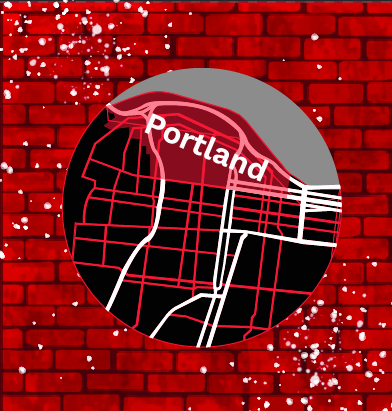
Several weeks ago, on a chilly Saturday morning, I got to take a look at the unfolding developments in person. Upon arrival to the Portland neighborhood, it didn’t seem like there was much going on. The area looked like just about any of the other neighborhoods bordering downtown Louisville. There are shotgun houses that sit shoulder to shoulder along the one way streets. There are convenience stores that sit on the corners, beckoning passersby with their neon signs. There are warehouses containing former industries that have since left these buildings abandoned. Nothing seems to be out of the ordinary. However, what the blind eye can not see is that development is unfolding rapidly behind these unassuming facades.
The start of my tour began at the former Boys and Girls Club building on Portland Avenue which has since been retrofitted into the headquarters of Holland’s project. The building is quiet with not much inside other than an indoor basketball court (this was used by the Boys and Girls Club before they departed) on the first floor. Off to the side is a stairwell that leads to a room on the second floor, also known as Holland’s office. There is a lot going on in the space: papers and documents scattered all across a table, a copy of rapper Jack Harlow’s first mixtape (which was produced under Holland’s record label), a map of the area West of Ninth Street, and concept art depicting developments planned for the neighborhood’s warehouse district.
Looking out from the window of the building, Holland pointed out several of the properties that he had recently purchased to be renovated.
“People say we’re gentrifying, but we’re not doing anything like the stuff going on in say San Francisco or Chicago,” Holland said.
From there, we walked a few blocks to more of the properties that had been redeveloped and what Holland envisions for the future of the area. Towards the end of the tour, we came across the recently opened Montgomery Apartments that have been built on a plot of land owned by Holland. I immediately recognized the building.
The new apartments were the site of a Black Lives Matter protest that took place in July 2020. On the day of the ribbon cutting that signified the opening of the apartment complex, a group of protesters showed up behind Mayor Fischer to express their concerns with the new development. A large banner placed behind the Mayor read the words “Fire! Fire! Gentrifier!” while the protesters shouted the same.
Phelix Crittenden, a local BLM protester who was part of the demonstration, said that she was concerned about developers buying up blocks of homes. “They’re kind of preparing that neighborhood to flip, but in doing so, they have to, I don’t want to say remove, but that is what they do.”
Crittenden claimed that the rent prices being charged by the new apartments were sitting around $1000 a month — an exorbitant amount considering the area. While this is not exactly true, the rates that are currently established still can not necessarily be considered “affordable” for the neighborhood. The Department of Housing and Urban Development describes affordable housing as places where households are spending no more than 30% of their income on rent. The median household income of the Portland neighborhood is estimated to be about $23,700 as of 2017. When looking at the rents of the units in the housing complex — $725 for a two bedroom and $830 for a three bedroom — they are over the 30% metric that would allow them to be considered affordable for the neighborhood.
Along with this, the closing documents for the property explain that the Louisville Metro Affordable Housing Trust Fund provided a $1 million loan to the $2.9 million project. The documents also state that the rent restriction has been set to 80% of the area median income (this being Louisville as a whole, not Portland specifically) which gives the complex the ability to eventually charge $1100 per month. In other words, money allotted by the city government specifically for low-income, affordable housing was used to fund a housing complex that is not sustainably accessible to the demographic it claims to serve.
A Look at Shelby Park
Across town from Portland sits another neighborhood named Shelby Park. Over the past few years, characteristics such as the area’s proximity to downtown and the Highlands along with its cheap homes have attracted families and investors alike.
Robert Bell, a teacher and current resident of the neighborhood, moved here in 2015 — the location and price being the perfect option at the time for him, his wife, and their three children.
“We knew that the neighborhood was relatively close to downtown, exactly between Old Louisville and Germantown — which is where a lot of my friends were already living — and compared to neighborhoods that we considered buying houses in this was more affordable for the space,” said Bell.
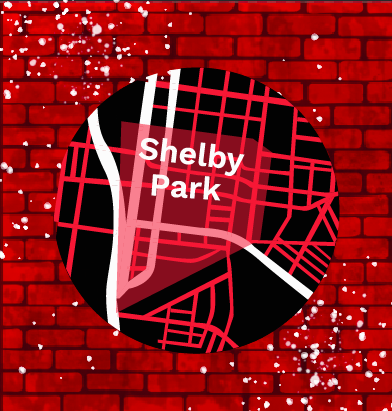
Bell moved in right as fears about a transition occurring crept into the minds of his new neighbors. Upon moving into his home, Bell quickly became a part of the neighborhood association. Whereas most neighborhood associations center around patrolling the aesthetic or exterior qualities of an area, Shelby Park’s was focused on maintaining the character of the neighborhood while on the precipice of new changes.
“There were a lot of people who had a sense of anxiety and trepidation around the concept of gentrification, around what the neighborhood might be transitioning to or transitioning from and wanting to guide that process in a way that was somewhat equitable,” Bell said.
The neighbors found it difficult to approach the issue of gentrification. There were many vacancies both literally and figuratively within the neighborhood that needed to be filled; however, at the same time it was crucial that they retained the cultural heritage of the area. Shelby Park has a history of social activism and service that continues to remain a large part of its legacy. Organizations within the community such as Volunteers of America (a group that provides addiction recovery resources) and the House of Ruth (a nonprofit that provides housing and support services for those with HIV/AIDS) are such examples of this legacy that those living here are attempting to preserve.
“We want to maintain that while also building the same sorts of pride in place, name recognition, community building, procedures, activities, and so forth that you want in any neighborhood that you want to live, because this is our home,” said Bell.
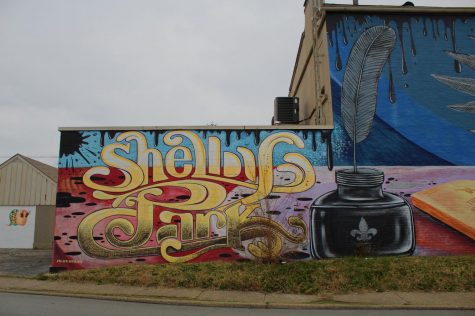
As the neighborhood began to rapidly gentrify around them, it became more clear that these changes were outside the control of the association itself. They attempted to create a balance between things like investment in affordable housing opportunities and investment in restaurants and businesses, but it was hard to deny the realities of what was going on.
Bell soon realized that the work that needed to be done to save the neighborhood could not be done at the level that he was currently at. He decided to turn his attention to local government by way of a seat on the Metro Council.
“Neighborhood associations as non political entities — at least not policy setting entities — only have a limited degree to which they can affect the process,” Bell said. “So at that point, I was like, I have to engage on a political level.”
What it All Means
Gentrification is complicated.
Before writing this article, like other teens, I had a basic concept of what the issue was all about. The problem seemed relatively simple. But as I got a closer look at the people involved — investors, protestors, politicians, and the residents themselves — it became apparent that this was far from the truth.
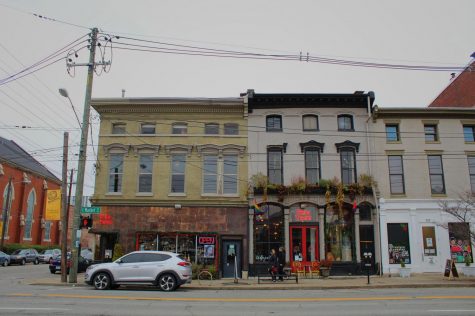
I became frustrated attempting to decipher what truly seemed to be an unsolvable cycle. Investment and the supplying of resources is needed for the sake of those in our community who live in these neighborhoods, but at what point does investment become displacement? At what point do these changes strip these places of their identity? Where is the boundary that separates growth from something hazardous? It seemed as though each possible solution I explored had some sort of fallout that just renewed the cycle once again.
At some point, I even began to question myself and the role that I play as a piece in this puzzle. I may not have personally pushed families from their homes or altered the culture of these areas, but it is easy to see how, in a lot of ways, these changes have directly benefited me. I can enjoy that overpriced cookie from Please and Thank You and take pictures with my friends for social media under the umbrella canopy at Redtree. When we get bored of our usual spots in St. Matthews or the Highlands, my friends and I can make a trip to that cool new restaurant in Shelby Park or Portland without thinking much of the conditions that have allowed the business to be established. I had spent a lot of time attempting to place blame on who I thought was the problem without considering where I stood in impacting the lives of others.
Despite all of this, the truth is that it is inaccurate to frame the extent of gentrification on such a small scale. It became evident that this problem was far bigger than I had originally imagined.
My journey to figure out more about this topic was very much a local one. I thought the answer to gentrification could be found in my own backyard — Louisville’s community members, politicians, and organizations who were doing the work to bring awareness and change. However, most of these attempts still left me at somewhat of a dead end.
Perhaps it is because gentrification is not a Louisville struggle, but rather an American one. In fact, when looking at the transformations that are affecting our own neighborhoods, comparisons can be made to similar situations that are unfolding in Atlanta, Cincinnati, Chicago, and other cities across the country. Although each city — and each neighborhood — has their own challenges, there is a shared, common denominator: housing being viewed as a privilege rather than a human right.
While it is important that we are mindful of our day to day choices — where we choose to spend our money, the places we decide to visit, and how we personally impact our community — along with supporting nearby efforts to put an end to this cycle, the scope of gentrification must be taken into account. Like many other systemic issues, it may seem difficult to face, but it is important that we continue to learn about and fight for change — our city depends on it.
Donations are collected through The Publishers, duPont Manual High School's booster club for J&C. On The Record relies completely on sponsorships, advertisements, and donations to produce and distribute each issue. Please consider donating to our cause, and helping the student journalists of OTR amplify youth voices for years to come.


